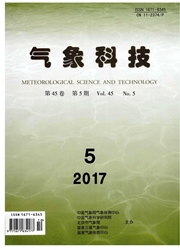

 中文摘要:
中文摘要:
很多自从 1960,在原处,云降水 microphysical 性质的大小被做了包括粒子尺寸分发的大小,粒子集中,和液体浇云和雨的内容。这些大小在在数字模型在云微视物理学的 parameterizations 在云和猛冲和重要改进理解 microphysical 过程贡献了可观的进步。这个工作在中国上关于云降水微视物理学考察关键调查结果。各种各样的粒子的全部的数字集中显著地变化,与某些典型空间规模。在层状的云的云微滴的尺寸分布能通常与 gamma 分布是合适的,但是合适的参数盖住一个宽范围。与层状的云联系的雨点尺寸分布(RSD ) 能与指数的任何一个或 gamma 分布是合适的,当与对流或混合的层状积云状的云联系的 RSD 是与 gamma 分布合适的最好时。冰原子核的集中(在里面) 在中国上比在另外的区域上观察的那些高,并且当温度减少,指数地增加。在许多地点取样的冰晶体,雪晶体,和冰雹的粒子尺寸分布能被使用指数的分布可靠地接近,当喷雾器粒子尺寸分布最好被描述为修改 gamma 分布和 Junge 幂定律分布的和时。这些结果对评估并且改善 microphysical parameterizations 模仿的物理进程和 hydrometeor 域的忠实有用。这里介绍的以前的工作的全面摘要和分析也为未来的设计提供有用指南观察节目。
 英文摘要:
英文摘要:
A large number of in-situ measurements of cloud-precipitation microphysical properties have been made since 1960, including measurements of particle size distribution, particle concentration, and liquid water content of clouds and rain. These measurements have contributed to considerable progress in understanding microphysical processes in clouds and precipitation and significant improvements in parameterizations of cloud microphysics in numerical models. This work reviews key findings regarding cloud-precipitation microphysics over China. The total number concentrations of various particles vary significantly, with certain characteristic spatial scales. The size distributions of cloud droplets in stratiform clouds can generally be fit with gamma distributions, but the fit parameters cover a wide range. Raindrop size distributions(RSDs)associated with stratiform clouds can be fit with either exponential or gamma distributions, while RSDs associated with convective or mixed stratiform-cumuliform clouds are best fit with gamma distributions.Concentrations of ice nuclei(IN) over China are higher than those observed over other regions, and increase exponentially as temperature decreases. The particle size distributions of ice crystals, snow crystals, and hailstones sampled at a variety of locations can be reliably approximated by using exponential distributions,while aerosol particle size distributions are best described as the sum of a modified gamma distribution and a Junge power-law distribution. These results are helpful for evaluating and improving the fidelity of physical processes and hydrometeor fields simulated by microphysical parameterizations. The comprehensive summary and analysis of previous work presented here also provide useful guidelines for the design of future observational programs.
 同期刊论文项目
同期刊论文项目
 同项目期刊论文
同项目期刊论文
 Spatial Distributions and Seasonal Variations of Tropospheric Water Vapor Content over the Tibetan P
Spatial Distributions and Seasonal Variations of Tropospheric Water Vapor Content over the Tibetan P Cloud microphysical budget associated with torrential rainfall during the landfall of severe tropica
Cloud microphysical budget associated with torrential rainfall during the landfall of severe tropica An orthogonal terrain-following coordinate and its preliminary tests using 2-D idealized advection e
An orthogonal terrain-following coordinate and its preliminary tests using 2-D idealized advection e An investigation into the relationship between liquid water content and cloud number concentration i
An investigation into the relationship between liquid water content and cloud number concentration i Effects of Vertical Wind Shear, Radiation, and Ice Clouds on Precipitation Distributions During a La
Effects of Vertical Wind Shear, Radiation, and Ice Clouds on Precipitation Distributions During a La 期刊信息
期刊信息
